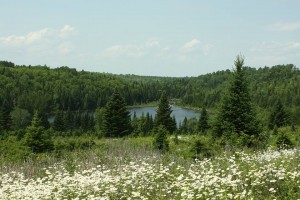Underground railroad to new brunswick

Who knew that Tomlinson Lake, nestled amongst the pines outside of Carlingford, was the end of a dangerous journey for many slaves who had escaped on the Underground Railroad.
The Underground Railroad helped thousands of escaped slaves find freedom in Canada.
Many routes led through New York into Ontario, but there were 130 Underground Railroad Stations in Maine that led the runaways to New Brunswick.
The British Empire had abolished slavery in 1833, making Canada a safe destination for slaves seeking freedom.
An 1850 Compromise Bill had ordered that runaways in the north be returned to their “masters”. Escapees were always in danger from bounty hunters, so even if they made it into non-slave states, they could still be legally captured.
Harriet Tubman, the most famous of the underground railroad conductors, escorted hundreds of slaves to freedom.
Tubman was also a spy, scout and nurse for the Union Army during the Civil War. A bounty of $40,000 ….forty thousand dollars! was offered for her, dead or alive.
John Wilkes Booth, the assassin of Abraham Lincoln, only had a bounty of $30,000 on his head!
Slave owners were serious about stopping the work of abolitionists and offered huge rewards for escaped slaves and those who aided them.
Maple Grove, Maine (near Fort Fairfield and Perth-Andover) had a community of Quakers who helped conduct escaping slaves to the border.
No written records were kept, because it was against the law to assist the slaves. The Quakers believed in obeying the law, but they also abhorred slavery.
The “stations” on the underground railroad consisted of safe houses and abolitionists who gave shelter and assistance to the refugees.
The James Fitzherbert Tavern in Fort Fairfield was one such station.
Slaves were hidden in a secret room behind a rollaway door that looked like a wall, then shuttled via Sam Everett Road to Tomlinson Lake.
This route met another one that took slaves from the Friends Church of the Quaker community to the border.
Once in New Brunswick they were met by communities of blacks between Fredericton and Saint John that had been established during earlier migrations.
Many of these new Canadian citizens moved on to Nova Scotia as well.
But New Brunswick played her part in giving new lives to the refugees who moved up here via the Underground Railroad.
Stephanie Kelley
